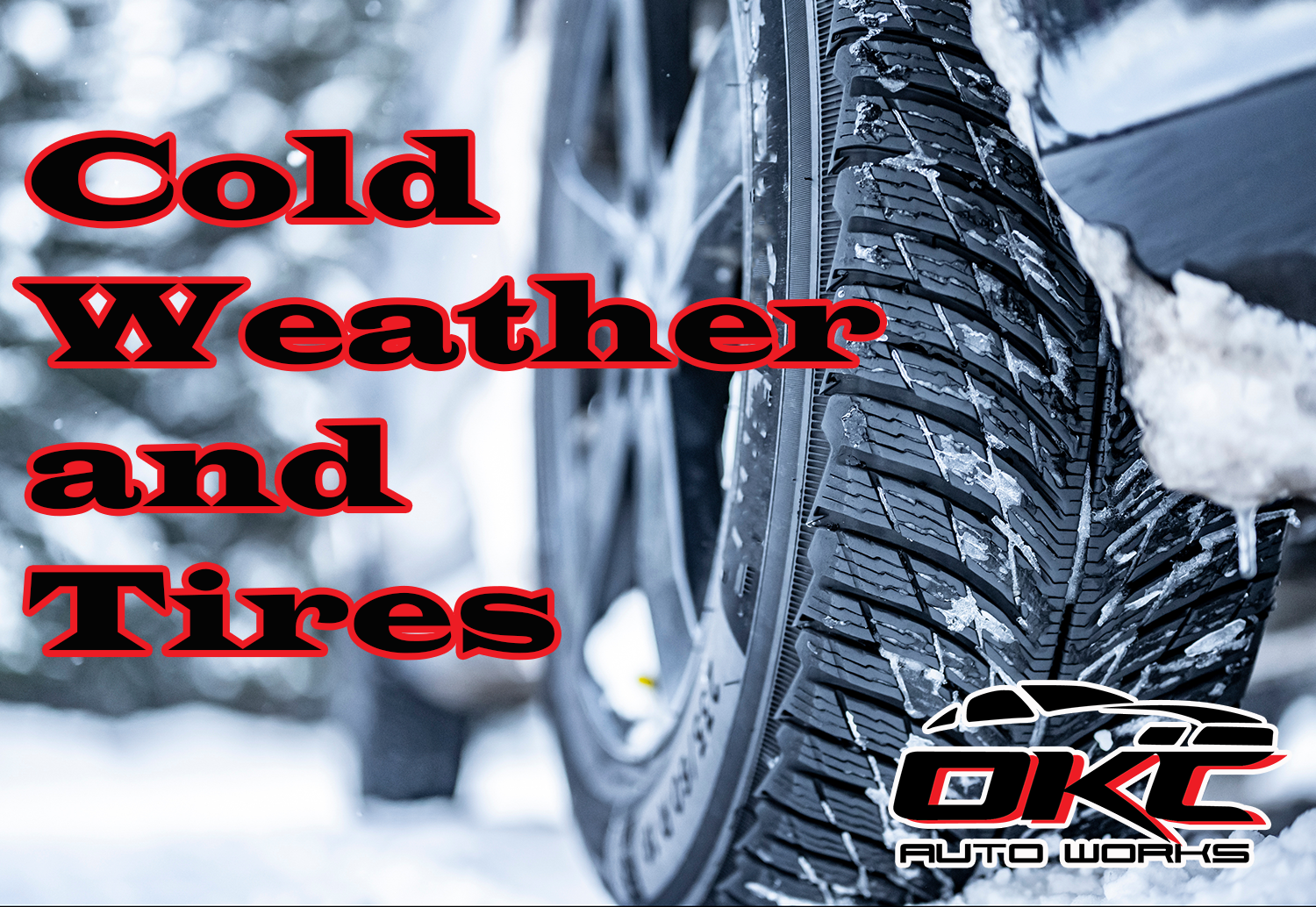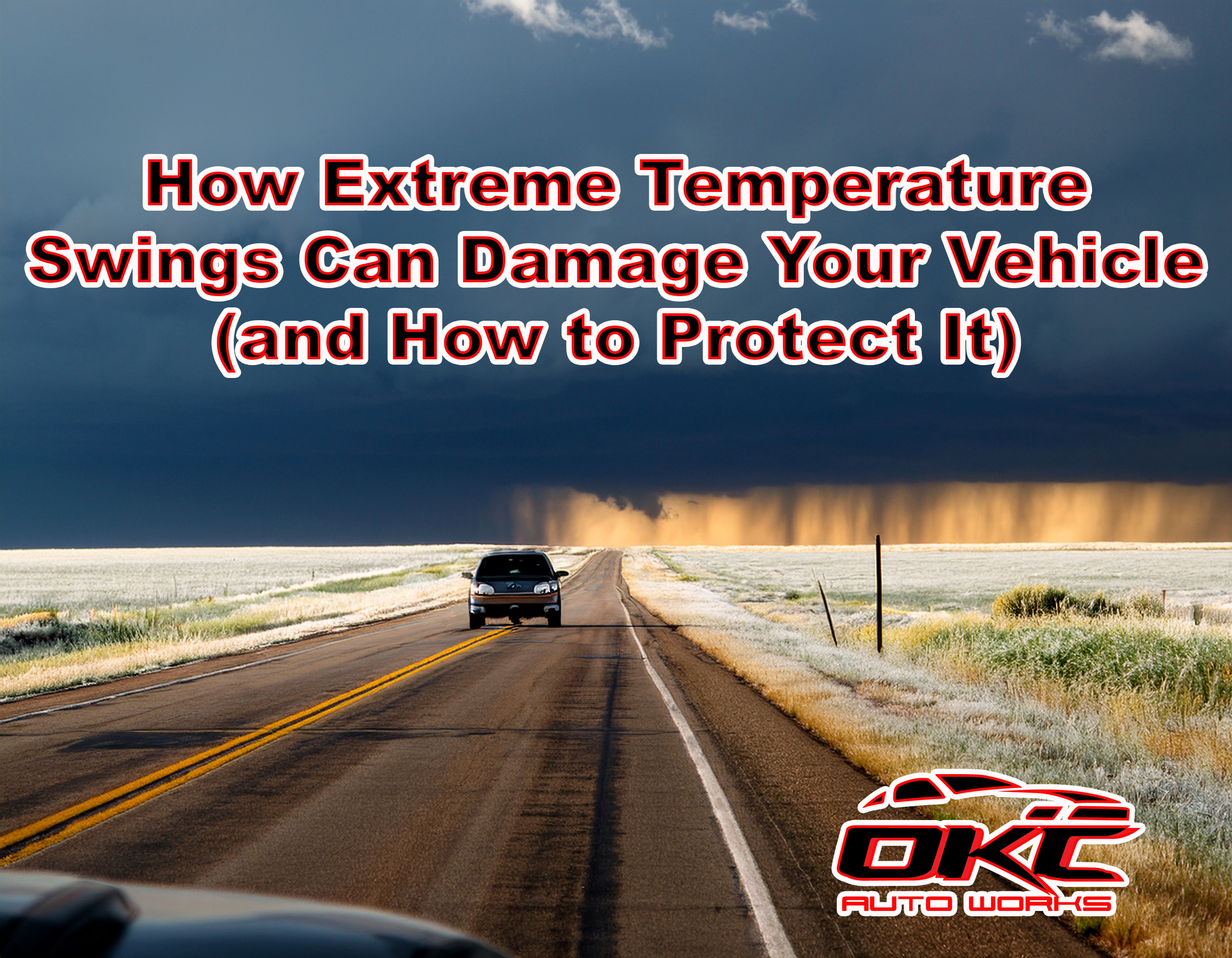Winters in Oklahoma can be so finicky. One day its freezing cold; the next day its almost hot. Just two days ago we saw snow that closed schools and caused many businesses to open late, followed by a beautiful, warm, sunshiny day that quickly erased any evidence of a winter wonderland. Its this manic weather that has had us debating on what tips would be beneficial to share this time of year. One thing you can count on with the ups and downs of Oklahoma temps is the rising and falling of one’s air pressure in their vehicle’s tires. Given the constant yo-yo effect on your tire’s psi, we thought perhaps it was time to discuss why this happens.
When temps drop, the psi or pressure in your tire’s drops, too. Along with this obvious change, another thing that is affected by the cold weather is the elasticity of your tires. Why is this? Well, as temps get colder the air inside the tire’s contracts (and as it gets warmer that same air expands). For every 10° F drop in temperature, the pressure on your tire drops about 1 lb. per square inch of pressure.
For example, if you aired up your tires to 35 psi while it was 70° F, one could reasonably expect that the tire pressure would drop to 31 psi if the temperature outside had dropped to 30° F the following morning. While this can no longer appear to be a massive deal, it may definitely have a significant effect in your tires.
Low air pressure puts a strain on tires during cold weather and can be the reason your tires lose their form, putting them at a greater risk for punctures and flats. This back and forth can also cause your tires to wear down faster since tires that are under-inflated have an increased contact area with the road. Moreover, under-inflated tires decrease your car’s breaking and steering capabilities.
So, what can you do to combat this? Well, while we cannot control the manic weather in Oklahoma, you can check your tires frequently, especially during the winter months when temperatures fluctuate the most. Tire gauges are a necessity and can be purchased for less than $10 for a very basic one up to $80 or $90 for a more elaborate and “fancy” one (Note: the cheap tire gauge will do just fine for gauging where your psi is, no need to splurge). If you have a newer vehicle, the computer on your car may even tell you what your tire pressure settings are forgoing the need to check it manually. In either case, if its too low you will need to add some air, and conversely, if its too high you will need to let some air out. This is where its very handy to own your own air compressor, but if you lack one no worries, many gas stations will provide air for free or for a nominal charge.
As briefly mentioned above, the up-and-down temperatures we experience here in Oklahoma also affects the elasticity of your tires. The cold weather makes the rubber on your tires harden. This hardening can make your tires more brittle, easier to puncture, and much “less grippy”. While there’s not much you can do about this, at least knowing this happens in the winter, you can take it into account as your drive on icy road conditions to be more careful and allow your self more room (and time) to stop.
Once the warm weather returns, of course the psi increases, so the important thing to take away from this short read is that you need to check your tire pressure regularly (more so when temps fluctuate). Since the health of your tires determine how well your vehicle steers, stops, and drives, it should not be neglected or overlooked. Additionally, your tire’s psi is a factor in your gas mileage so in keeping your tire psi in check, you are also helping to ensure you get as efficient gas mileage as possible.
If you find a need for new tires, an alignment, or just want someone to check out your vehicle for safety and mechanical issues, know that OKC Auto Works is here to help. (405) 634-8200




